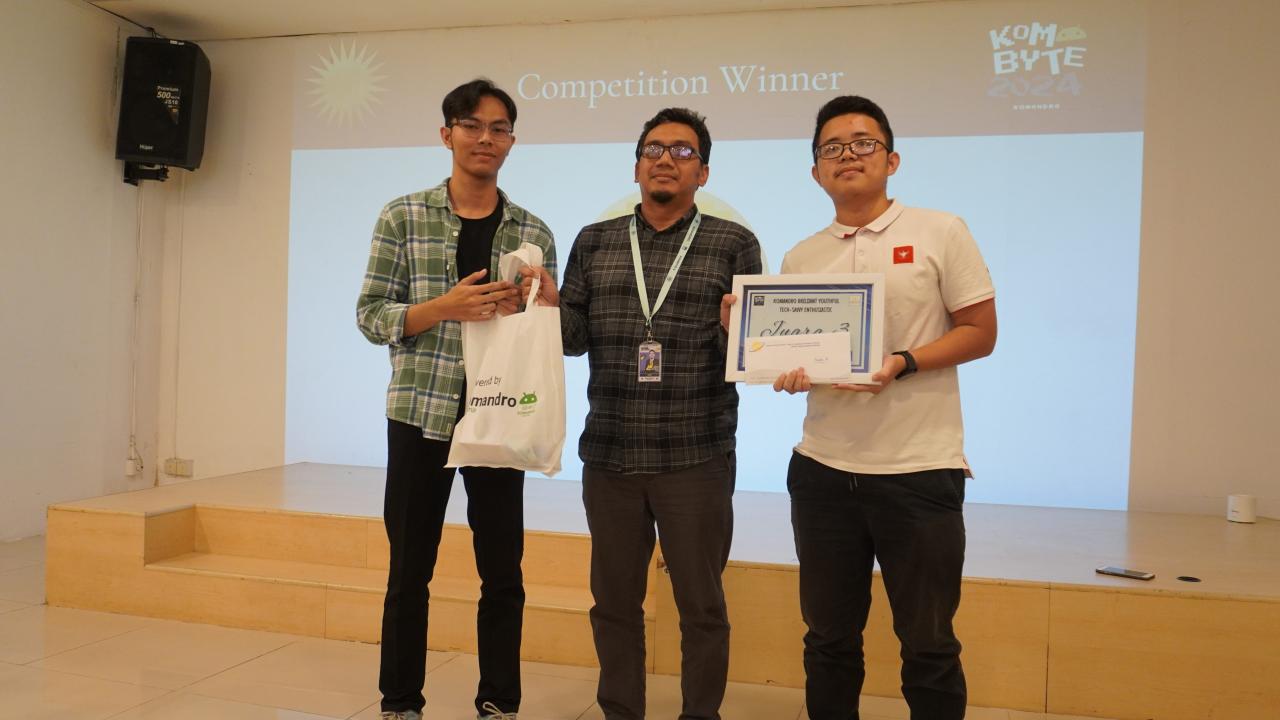
Earn CPEs with Bug Bounty 2 Level Up Your Career
Earn CPEs with Bug Bounty 2: Who knew ethical hacking could boost your professional development? This isn’t your grandpappy’s cybersecurity training; we’re talking real-world experience, tangible skills, and – the best part – valuable CPE credits. This post dives deep into how you can leverage bug bounty programs to not only sharpen your hacking prowess but also enhance your professional credentials.
Get ready to turn vulnerabilities into valuable learning opportunities!
We’ll cover everything from finding reputable bug bounty platforms that offer CPE credits to crafting killer vulnerability reports that impress even the toughest program administrators. We’ll also tackle the challenges head-on, offering practical solutions to common hurdles. Think of this as your ultimate guide to maximizing your CPE earnings while honing your skills in the exciting world of ethical hacking.
Introduction to Bug Bounty Programs and CPEs

Bug bounty programs are collaborative vulnerability disclosure initiatives where organizations incentivize security researchers to identify and report security flaws in their systems. These programs offer a valuable service to companies by improving their overall security posture. Interestingly, participation in these programs can also contribute towards earning Continuing Professional Education (CPE) credits, a crucial element for maintaining professional certifications in many cybersecurity fields.
This connection between bug bounty hunting and CPEs opens up opportunities for professionals to enhance their skills and credentials simultaneously.The relationship between bug bounty programs and CPE credits is straightforward: many organizations and certification bodies now recognize the practical, hands-on experience gained from participating in bug bounty programs as valuable professional development. Successfully identifying and responsibly disclosing vulnerabilities demonstrates a high level of technical expertise and ethical conduct, both of which are highly valued in the cybersecurity field.
The CPE credits awarded reflect this contribution to the field. Earning CPEs through bug bounty hunting provides a unique pathway to professional development that blends practical experience with formal recognition.
Types of Bug Bounty Programs
Bug bounty programs vary significantly in scope and structure. Some are public, meaning anyone can participate, while others are private, inviting only pre-selected individuals or teams. Public programs often target a specific product or service, whereas private programs may cover a wider range of internal systems. The rewards offered also vary greatly, ranging from monetary compensation to recognition and other perks.
Finally, the level of detail and reporting requirements can differ considerably, depending on the program’s goals and the organization’s needs. Understanding these variations is crucial for selecting programs that align with one’s skills and experience.
Organizations Offering CPE Credits for Bug Bounty Participation
Several organizations are now recognizing the value of bug bounty participation by offering CPE credits. While a definitive list is difficult to maintain due to the constantly evolving landscape, many professional certification bodies, such as (ISC)² and ISACA, often consider bug bounty participation as a valid way to earn CPE credits. It is advisable to check directly with the specific certification body for their most up-to-date policies.
Furthermore, some bug bounty platforms themselves may partner with certification organizations to streamline the process of claiming CPE credits. This trend reflects a growing acceptance of the practical value of bug bounty hunting as a form of professional development. For example, a successful vulnerability report leading to a fix on a critical system could be documented and submitted for CPE credit consideration.
Identifying Eligible Bug Bounty Programs

Finding bug bounty programs that offer CPE credits requires careful research and understanding of each platform’s specific requirements. Not all bug bounty programs offer CPEs, and the eligibility criteria can vary significantly. This section will Artikel reputable platforms and compare their approaches to CPE credit awarding.
Reputable Bug Bounty Platforms and CPE Credit Availability
Several reputable bug bounty platforms have partnered with organizations to offer CPE credits for qualifying vulnerability reports. These platforms often provide a diverse range of targets, from large corporations to open-source projects, catering to various skill levels and interests. The availability of CPE credits is typically explicitly stated within the program’s rules and guidelines. It’s crucial to always verify this information directly on the platform before investing time and effort.
Comparison of CPE Credit Eligibility Criteria
The criteria for earning CPE credits through bug bounty programs differ across platforms. Some platforms may award credits based solely on the severity of the vulnerability discovered, while others may consider factors like the impact, reproducibility, and the quality of the vulnerability report. Furthermore, some platforms may have minimum payout thresholds or require a specific number of validated vulnerabilities before CPE credits are granted.
Understanding these nuances is vital for maximizing your CPE acquisition. For instance, one platform might award CPEs for any vulnerability deemed “critical” or “high,” regardless of the monetary reward, whereas another platform might only offer CPEs for vulnerabilities that meet a more stringent set of criteria and result in a significant financial reward.
Platform Comparison Table
| Platform Name | CPE Credit Availability | Program Requirements | Payment Methods |
|---|---|---|---|
| HackerOne | Often available, check individual programs | Varies by program; typically requires a detailed, reproducible report | Typically via PayPal or direct bank transfer |
| Bugcrowd | Often available, check individual programs | Varies by program; similar to HackerOne, focusing on report quality and impact | Typically via PayPal or direct bank transfer |
| Synack | May be available, check program details | Generally requires higher-level expertise and thorough reporting | Typically via direct bank transfer |
| YesWeHack | Often available, check individual programs | Similar to other platforms, emphasizing clear and reproducible reports | Typically via PayPal or direct bank transfer |
Strategies for Earning CPE Credits Through Bug Bounties
Earning CPE credits through bug bounty programs requires a strategic approach that combines vulnerability research skills with a keen understanding of program rules and requirements. This isn’t just about finding bugs; it’s about findingvaluable* bugs and documenting them meticulously for maximum impact. Focusing on high-impact vulnerabilities and crafting detailed reports significantly increases your chances of earning substantial CPE credits.Effective strategies for finding and reporting high-value vulnerabilities involve a multi-pronged approach.
It’s not a matter of luck; it’s about systematic investigation and a deep understanding of the target system.
High-Value Vulnerability Targeting
Prioritizing your efforts on vulnerabilities that carry significant risk to the organization is crucial. Focus on critical vulnerabilities such as SQL injection, cross-site scripting (XSS), remote code execution (RCE), and authentication bypasses. These typically yield higher rewards and CPE credit allocations due to their potential for widespread damage. For example, a successful RCE vulnerability allowing complete server compromise is far more valuable than a minor cosmetic UI bug.
Understanding the OWASP Top 10 vulnerabilities provides a solid framework for targeting high-impact flaws. Further, analyzing the specific program’s scope and bounty structure helps prioritize efforts towards vulnerabilities that align with their interests and reward tiers.
Detailed Vulnerability Reports
A well-written vulnerability report is the cornerstone of successful CPE credit acquisition. It’s not enough to simply state “I found a bug.” The report must clearly and concisely describe the vulnerability, its impact, steps to reproduce it, and a proposed solution. Think of your report as a technical document that a developer can use to quickly understand and fix the issue.
Include screenshots, network traces, and any other supporting evidence. The more detail you provide, the more likely the program administrators are to understand and appreciate the significance of your finding, leading to higher credit allocation. Consider using a structured reporting format to ensure clarity and completeness.
Step-by-Step Bug Report Submission and CPE Credit Claim
Submitting a bug report and claiming CPE credits usually involves these steps:
1. Identify the vulnerability
Thoroughly investigate the target system and identify potential security weaknesses.
2. Reproduce the vulnerability
Ensure you can consistently reproduce the vulnerability with clear steps.
3. Document the vulnerability
Create a detailed report including steps to reproduce, impact, screenshots, and a proposed solution. Use a clear and concise writing style.
4. Submit the report
Submit your report through the designated platform or channel of the bug bounty program.
5. Follow up
After submission, follow up with the program administrators to confirm receipt and inquire about the review process.
6. Claim CPE credits
So, you’re looking to earn CPEs with Bug Bounty 2? A solid understanding of cloud security is crucial, and that means knowing about solutions like Bitglass. Check out this insightful article on bitglass and the rise of cloud security posture management to boost your knowledge. This deeper understanding will definitely help you identify vulnerabilities and earn those CPEs faster in Bug Bounty 2!
Once the vulnerability is validated, follow the program’s guidelines to claim your CPE credits. This often involves providing necessary documentation or completing a specific form.For instance, a hypothetical scenario: You find an SQL injection vulnerability in a web application. Your report should include the specific URL, the SQL injection payload, screenshots of the vulnerable input field, the resulting database error messages, and the steps to reproduce the vulnerability.
So, you’re looking to earn CPEs with bug bounty hunting, round two? That’s awesome! Thinking about diversifying your skills, though, maybe check out this article on domino app dev, the low-code and pro-code future , as understanding application development can broaden your bug-finding perspective. Knowing how apps are built can definitely help you find more vulnerabilities, leading to more CPEs in your bug bounty journey!
Propose a solution, such as parameterized queries or input validation, to prevent future attacks. This comprehensive approach ensures a higher likelihood of credit allocation.
Documentation and Reporting for CPE Credit Claim
Successfully claiming CPE credits for bug bounty findings hinges on meticulous documentation and clear communication. The quality of your vulnerability report directly impacts your chances of receiving credit, and a well-structured report demonstrates professionalism and attention to detail. Providing comprehensive information saves time for the bug bounty program administrators and strengthens your claim.The necessary documentation for CPE credit claims generally includes a detailed vulnerability report, proof of concept (PoC), and confirmation of remediation from the program administrator.
Specific requirements may vary between programs, so always refer to the individual program’s guidelines. The report should clearly Artikel the vulnerability’s type, location, severity, impact, steps to reproduce, and proposed remediation. Evidence of your successful exploitation is crucial, and a well-written report should leave no room for doubt regarding your findings.
Necessary Documentation Components
A complete vulnerability report typically contains the following:
- Vulnerability Summary: A concise overview of the discovered vulnerability, including its type (e.g., SQL injection, cross-site scripting, etc.) and a brief description of its impact.
- Technical Details: A detailed explanation of the vulnerability, including its location, the affected code or system components, and the technical mechanisms exploited.
- Steps to Reproduce: A clear and concise set of steps that allow the program administrator to reproduce the vulnerability. This should be detailed enough for someone unfamiliar with the system to follow.
- Proof of Concept (PoC): Irrefutable evidence of the vulnerability’s existence. This might include screenshots, videos, or code snippets demonstrating successful exploitation. For example, a successful SQL injection might be demonstrated with a screenshot showing the database contents retrieved, or a cross-site scripting vulnerability might be shown by a video recording of the attack.
- Impact Assessment: An analysis of the potential impact of the vulnerability, considering factors such as data breach risk, system disruption, and financial loss. For example, a vulnerability allowing unauthorized access to sensitive user data carries a much higher impact than a cosmetic issue.
- Remediation Recommendation: A suggestion for fixing the vulnerability, outlining the necessary steps to mitigate the risk. This should be clear, concise, and technically sound.
- Timeline: A record of the dates of discovery, report submission, and remediation confirmation.
Examples of Well-Documented Vulnerability Reports
Consider these illustrative examples, keeping in mind that specific details would vary based on the nature of the vulnerability: Example 1: Cross-Site Scripting (XSS) VulnerabilityA report on an XSS vulnerability might include screenshots showing the injected malicious script executing in the victim’s browser, the code snippet used for the injection, and a detailed explanation of how the script bypassed security measures. The impact assessment would emphasize the potential for session hijacking, data theft, or phishing attacks.
The remediation recommendation would involve input sanitization and output encoding. Example 2: SQL Injection VulnerabilityA report detailing an SQL injection vulnerability would include screenshots of the database query used to exploit the vulnerability and the resulting data exfiltration. The report should demonstrate the ability to access sensitive data, such as user credentials or financial information. The impact assessment would highlight the severity of the data breach, and the remediation would recommend parameterized queries or other input validation techniques.
Best Practices for Communicating with Bug Bounty Program Administrators, Earn cpes with bug bounty 2
Effective communication is crucial for a smooth and successful bug bounty process.
- Professionalism: Maintain a professional tone in all communications. Be respectful and courteous, even if you encounter delays or disagreements.
- Clear and Concise Communication: Use clear and concise language in your reports and communications. Avoid jargon or overly technical language that the administrator might not understand.
- Regular Updates: Keep the administrator informed of your progress, especially if you encounter any difficulties during the vulnerability research or reporting process.
- Prompt Response: Respond promptly to any questions or requests from the administrator. A quick turnaround time demonstrates your commitment to the program.
- Follow Program Guidelines: Adhere strictly to the bug bounty program’s guidelines and policies. This will avoid any misunderstandings or disputes.
Tracking and Managing CPE Credits Earned
Keeping track of your CPE credits earned through bug bounty programs can feel overwhelming, especially as you participate in multiple programs simultaneously. A robust system for tracking and managing these credits is crucial for ensuring you meet your professional development requirements and avoid any potential discrepancies. This section details effective methods for maintaining accurate records of your bug bounty activities and their associated CPE credits.Effective methods exist for tracking CPE credits from diverse bug bounty programs.
These methods range from simple spreadsheets to dedicated software solutions, each offering varying levels of organization and automation. The key is to find a system that works for you and consistently update it.
Spreadsheet Tracking
A simple spreadsheet, like one created in Microsoft Excel or Google Sheets, provides a straightforward way to manage your CPE credits. You can create columns for the bug bounty program name, the date of the report submission, the date of credit approval, the number of CPE credits awarded, a brief description of the vulnerability, and any relevant links or IDs.
This allows for easy filtering and sorting based on different criteria. For instance, you could easily see how many CPE credits you’ve earned from a specific program or within a particular time frame. Regularly backing up your spreadsheet is essential to prevent data loss.
Dedicated Software Solutions
Several project management and professional development tracking tools can be adapted to manage CPE credits earned through bug bounty hunting. These tools often offer features like automated reminders, progress tracking, and reporting capabilities, which can simplify the process significantly. Some platforms allow for custom fields, enabling you to add specific information relevant to your bug bounty activities, like vulnerability type and program name.
This structured approach ensures data integrity and provides a more comprehensive overview of your CPE credit accumulation.
Sample CPE Credit Tracking System
Here’s a sample HTML table illustrating a personal CPE credit tracking system. Remember to adapt this to your specific needs and the requirements of your chosen CPE tracking method.
| Bug Bounty Program | Report Submission Date | Credit Approval Date | CPE Credits Awarded |
|---|---|---|---|
| HackerOne – Company X | 2024-03-15 | 2024-03-22 | 5 |
| Bugcrowd – Company Y | 2024-04-10 | 2024-04-18 | 2 |
| YesWeHack – Company Z | 2024-05-05 | 2024-05-12 | 8 |
| Synack – Company A | 2024-06-20 | 2024-06-27 | 3 |
Potential Challenges and Solutions
Earning CPE credits through bug bounty hunting isn’t always a smooth ride. While the potential rewards are significant, several hurdles can impede your progress. Understanding these challenges and proactively developing solutions is crucial for maximizing your CPE credit acquisition and building a successful bug bounty hunting career. This section will delve into common obstacles and offer practical strategies to overcome them.
One of the biggest challenges lies in navigating the diverse requirements and policies of different bug bounty programs. Each program has its own scope, rules, and validation processes, making it essential to meticulously study each program’s guidelines before submitting any findings. Furthermore, the verification process itself can be time-consuming and complex, requiring detailed documentation and sometimes back-and-forth communication with the program’s security team.
The criteria for awarding CPE credits also varies, adding another layer of complexity.
Program Requirements and Verification Processes
Successfully navigating bug bounty programs hinges on a thorough understanding of their specific rules and policies. Each program has a unique scope, defining what types of vulnerabilities are eligible for rewards. For example, one program might focus solely on web application vulnerabilities, while another might include mobile apps or IoT devices. Failing to adhere to these defined scopes can lead to rejected submissions, wasted effort, and a loss of potential CPE credits.
Moreover, the verification process, which involves the program’s security team assessing the validity and severity of your reported vulnerability, can be rigorous. This often requires providing comprehensive evidence, such as detailed steps to reproduce the vulnerability, technical explanations, and potential impacts. A poorly documented report can result in delays or rejection, even if the vulnerability is genuine.
This highlights the importance of clear, concise, and technically sound reporting.
Improving Reporting Skills and Understanding Program Policies
To overcome these challenges, focusing on improving reporting skills is paramount. This involves mastering clear and concise vulnerability descriptions, providing detailed reproduction steps, and effectively communicating the potential impact of the vulnerability. Practicing writing vulnerability reports using standardized templates and seeking feedback from experienced bug bounty hunters can significantly enhance your reporting skills. Furthermore, actively engaging with the bug bounty community, participating in forums and discussions, and reading publicly available vulnerability reports can provide invaluable insights into best practices.
Thoroughly reviewing the rules and policies of each program before submitting a report is equally crucial. This ensures that your submissions align with the program’s scope and requirements, increasing the likelihood of successful validation and CPE credit acquisition.
Continuous Learning and Skill Development
The bug bounty landscape is constantly evolving, with new technologies and attack vectors emerging regularly. Continuous learning is therefore essential for staying ahead of the curve and maximizing your earning potential. This involves keeping abreast of the latest security trends, learning new programming languages and tools, and regularly practicing your skills. Participating in online courses, attending security conferences, and actively engaging with the bug bounty community are excellent ways to enhance your knowledge and skills.
Investing time in improving your understanding of various programming languages, network protocols, and operating systems is also crucial for identifying and reporting a wider range of vulnerabilities. This continuous improvement not only increases your chances of finding higher-value vulnerabilities but also enhances your ability to effectively document and report your findings, ultimately leading to more efficient CPE credit acquisition.
Legal and Ethical Considerations: Earn Cpes With Bug Bounty 2
Bug bounty hunting, while potentially lucrative, operates within a strict legal and ethical framework. Ignoring these considerations can lead to serious consequences, including legal repercussions and damage to your reputation. Understanding and adhering to these guidelines is crucial for a successful and sustainable career in ethical hacking.The primary legal and ethical concern revolves around responsible disclosure. This means you must follow the program’s rules and guidelines meticulously, which often involves privately reporting vulnerabilities to the organization before publicly disclosing them.
Public disclosure without prior authorization can violate terms of service, intellectual property rights, and even criminal laws, depending on the nature of the vulnerability and the jurisdiction. This can result in legal action, financial penalties, and a permanent ban from future bug bounty programs.
Responsible Disclosure Practices
Responsible disclosure is the cornerstone of ethical bug bounty hunting. It involves a structured approach to reporting vulnerabilities, ensuring the organization has ample time to fix the issue before it’s publicly known. This process typically includes providing detailed vulnerability information, steps to reproduce the issue, and potential impact assessments. The goal is to help organizations improve their security posture without causing unnecessary harm or disruption.
Many bug bounty programs have specific guidelines outlining their responsible disclosure policies; failure to comply with these policies can invalidate your claim for a bounty and potentially lead to legal issues. For example, a program might specify a maximum time window for reporting a vulnerability before public disclosure is allowed.
Ethical Guidelines for Bug Bounty Hunters
Before engaging in any bug bounty activity, it’s essential to understand and adhere to a strict code of ethics. This ensures you’re acting responsibly and legally.
- Obtain explicit permission: Only participate in programs where you have explicit permission to test the target system.
- Respect confidentiality: Do not share information obtained during testing beyond the program’s scope or the organization’s authorized personnel.
- Avoid data breaches: Refrain from accessing or exploiting vulnerabilities that could lead to unauthorized data access or breaches of privacy.
- Limit your impact: Only perform actions necessary to identify and report vulnerabilities; avoid causing unnecessary damage or disruption.
- Follow program rules: Adhere strictly to the terms and conditions of each bug bounty program. This includes reporting timelines, communication channels, and scope limitations.
- Be transparent and honest: Provide accurate and detailed reports of vulnerabilities, including clear steps to reproduce the issue and potential impact.
- Maintain professionalism: Communicate professionally and respectfully with the organization throughout the entire process.
Summary
So, there you have it – a roadmap to earning CPE credits while becoming a more skilled and ethical bug bounty hunter. Remember, consistent effort, meticulous reporting, and a commitment to ethical practices are key. Don’t just hunt bugs; hunt for knowledge, hone your skills, and watch your professional profile soar. The world of cybersecurity is waiting for your unique talents, and the CPE credits are just the icing on the cake!
Essential FAQs
What if a bug bounty program doesn’t explicitly mention CPE credits?
It’s always worth contacting the program administrator directly to inquire about CPE credit possibilities. Many programs are open to providing them if you demonstrate the learning and skill development involved.
How do I prove the time spent on bug bounty activities for CPE credit?
Keep detailed records: timestamps of your work, screenshots of vulnerability reports, and communication logs with the program administrators. This documentation will support your claim.
Are there any limitations on the number of CPE credits I can earn through bug bounties?
The number of CPE credits you can earn will vary depending on the program, the complexity of the vulnerabilities found, and the organization’s policies. There’s often no hard limit, but the quality of your work matters more than quantity.





